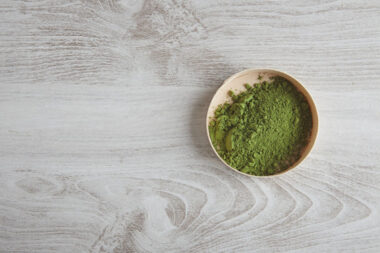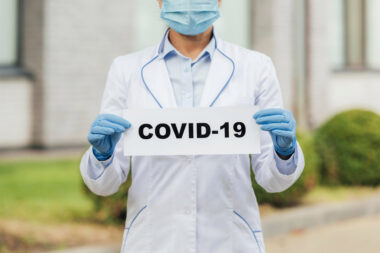The state of modern healthcare is a hotly debated issue. From prescriptions given out, at times, like candy to high deductibles and long wait times, many will agree that, despite new advances in medicine that have saved many lives, we still have a long way to go.
In 2018, for example, the average American life expectancy dropped to 76.3, ranking at No. 27 on the Organization for Economic Cooperation and Development’s annual list, falling behind world nations such as Iceland, Australia, Japan, Italy, Israel, Canada, and New Zealand – and this was before the onset of the COVID-19 pandemic.
As more and more people become disillusioned with the state of modern healthcare, we’ve seen a rise in concierge-style medicine and alternative, holistic therapies, everything from acupuncture to float therapy. This has led to a seemingly us vs. them mentality, with a clear division between those in favor of modern medicine and those who eschew it for natural approaches or a focus on wellness and prevention.
However, what if it’s possible to merge the two?
The Status Quo of Modern Healthcare
When you hear the term “modern medicine,” you probably picture seeing the doctor, who writes you a prescription or two, recommends further testing, or refers you to a specialist (or, quite possibly, a combination of all three). In all, you’ve spent maybe 10 minutes with the doctor, much less time than you spent waiting and preparing for the appointment itself. And, if your problem persists, this is just the beginning of a cat-and-mouse chase of dealing with insurance providers and waiting months to see a specialist.
Unfortunately, we’ve become accustomed to this model. From the provider’s perspective, this “high volume” approach allows them to see multiple patients each day to sustain their practices, but it comes at a cost: Doctors are overworked and overwhelmed. Gary Cooperstein, DO, former owner of Whitford Family Medicine & Occupational Health Center in Downingtown, Pennsylvania, points out the pressure that medical practices are under financially, which often leads to excessive medical services rendered, he says, increasing overall healthcare costs – which is unjust for everyone involved.
According to Terry Bauer, CEO of Specialdocs Consultants, as reported by Scientific American, “As the health care landscape began its shift to volume-based care in the early 2000s, physicians became increasingly frustrated—challenged by rising operational costs, an intensified administrative burden and sharp cuts in reimbursement.”
Keith Sadel, MD, internist and owner of Preservation Health in Southampton, Pennsylvania, has experienced this firsthand. “Traditional medicine, with the insurance companies, is based on volume, and, with volume, you don’t necessarily get good care,” he says, describing how he spends much time each week doing things other than working directly with patients: This includes getting tests and prior authorizations for a medication approved and dealing with the ever-changing rules of insurance providers.
Cooperstein transitioned to concierge medicine to spend more time with his patients and provide better quality care. At first, he wasn’t sure how his patients would feel about this move, but, “to my surprise, most of my patients were in favor of it,” he says.
Challenging the Status Quo: Shifting the Focus to Wellness and Prevention
The 1990s saw the start of the rise in alternatives to modern medicine, many of which have roots in ancient practices, being turned to once again by many who have become disillusioned by modern healthcare. In fact, a December 2008 National Health Statistics Report revealed that 40% of American adults surveyed had engaged in some type of alternative health practice in 2007. According to the World Health Organization (WHO), traditional Chinese medicine constitutes about half of all medical care in China and some 80% of healthcare in Sub-Saharan Africa. And, in 2019, the WHO even recognized Eastern medicine for the first time by including a chapter on the topic in the latest version of its global report (via CNN).
Alternative health practices, such as acupuncture, for example, are seen today as a viable alternative, or complement, to medicine in some cases, as research points to its effectiveness in treating headaches, chronic pain, anxiety, infertility, and more, according to Johns Hopkins Medicine. Essential oils have risen in popularity to help relieve everything from headaches to congestion, while massage has become more commonly integrated into daily life rather than seen simply as a luxury in which to indulge.
Even more recently is the rise in other therapeutic practices that have roots in ancient practices, like float therapy, which consists of floating for an hour in a tank of magnesium-rich water at body temperature. According to research, floating can improve stress levels, sleep, creativity, and cognition, while lessening pain and inflammation, replenishing the skin, boosting circulation, and relaxing muscles. Then there’s salt therapy, or halotherapy, which consists of breathing in salt, sometimes from particles filling the air by way of a hydrogenator, while relaxing in a cave-like atmosphere reminiscent of an authentic Himalayan salt cave. It’s said to work wonders on sinus congestion, asthma, and other respiratory ailments.
In addition to these is the rise in concierge medicine, also referred to as membership or direct-care medicine. The concept is based on prevention rather than dealing with issues once they occur. In the concierge model, providers spend more time with fewer patients. Comprehensive patient visits provide a full picture of a patient’s health and lifestyle: everything from work, diet, exercise, and daily water intake to sleep and stress.
Through this deep dive and personalized approach, physicians focus on a combination of traditional and nontraditional medical treatments, along with lifestyle changes, and work to find the root cause of conditions. Cooperstein says he has seen excellent results in patients with chronic back ailments who practice core stabilizing exercises and stretches, such as yoga and pilates.
Additional visits needed can even be accommodated on the same day, and most direct-care providers offer convenient early morning and evening appointments. If a specialist is needed, doctors can quickly access convenient appointments for patients. In many cases, issues can be solved more quickly with the additional time and access that the model provides. In fact, this increased availability, Cooperstein notes, led to a decrease in the number of after-hours calls he received from patients.
With the membership model, comes an upfront cost, anywhere from several hundred to several thousand dollars, based on the practice and location. But, depending on your healthcare needs – when considering the time and money you might typically spend on prescriptions and co-pays – the model may very well be worth it.
Cooperstein describes one former patient who especially benefitted from the extra care he provided. After delving into the patient’s family history and lifestyle, Cooperstein ordered several tests, the results of which led the patient to undergo heart surgery – the doctor notes that his patient would have been at increased risk “had we not been able to make an earlier intervention,” quite possibly saving his life.
Bridging the Gap Between Modern Medicine and Wellness
Many believe that traditional healthcare and wellness are two separate entities, but there seems to be this middle ground between those who swear off medication for a natural lifestyle and those who dismiss wellness and holistic practices. And, if you’ve ever sought a medical practice that not only addresses wellness and prevention but also dedicates the time to truly listen to patients, it’s not easy to find – though it does exist.
Since 2019, a suburban Philadelphia-based, concierge-style medical practice, Preservation Health, has attempted to address this gap in the industry to benefit those who seek an internal medicine practice that not only provides patients more time and access but also focuses on prevention. Owner and internist Keith Sadel, MD has practiced medicine for over 20 years, during which time he has seen the industry change to a “high volume” approach. According to Sadel, the typical practice must see between 25 and 30 patients per day to sustain the practice, which leaves only about 10 minutes a day with each patient.
“Preservation Health is a solution that allows me to spend time with the patient,” says Dr. Sadel. “I have more time to devote to listening to the patient — which most physicians just don’t have time to do nowadays – which is very powerful.”
Every day, Sadel treats patients with a variety of chronic and acute conditions through a combination of modern medicine, lifestyle changes, and wellness practices – with less-invasive approaches first before opting for prescription medication, much of which have harmful side effects. At Preservation Health, each patient receives a lengthy initial visit to provide a full picture of their health and lifestyle.
“Preservation Health, as the name implies, is about preserving patients’ health. It’s for all people, whether you have chronic conditions or not,” Sadel explains. “What’s so great about this model of medicine is that we can prevent illnesses before they happen. We can be proactive, as opposed to reactive.”
If additional specialists are needed, patients have access to quick appointments that would be nearly impossible to get without this model. Sadel even makes house calls for patients who are unable to come to the office. Additionally, the practice expedites medications, speaks to specialists, and coordinates care with other specialists. Blood work is done on-site, and convenient same-day and next-day – early morning and evening – appointments are available, along with 24-hour access to the physician, should emergencies arise.
Preservation Health also offers travel medicine and a medical cannabis program. Patients even receive discounts to its sister facility, Lma Mineral Float, a float therapy center, with a sauna, run by Sadel’s wife, Vivi, which provides an innovative and luxurious, yet practical, health practice rooted in ancient times. Though inspired by the healing benefits of ancient communal Greek and Roman spas, Lma provides a solitary experience for modern times.
Through Preservation Health and Lma, this husband-and-wife team offers a comprehensive medical practice and wellness facility in one for a truly one-stop-shop for healthy living – and a model that represents the future of healthcare. Interestingly, “the end result,” says Sadel, “is that, while moving toward the future, we’re actually going back in time, a time where everyone knows the local doctor, and the doctor knows them.”
Thumbnail Credit: Perig76








































Leave a Reply